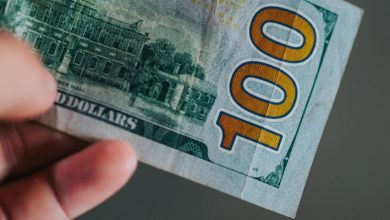How to Read Crypto Charts: Introduction to Technical Analysis

- Understanding Crypto Charts: A Beginner’s Guide
- The Basics of Technical Analysis for Cryptocurrency
- Interpreting Candlestick Patterns in Crypto Charts
- Tools and Indicators for Analyzing Crypto Charts
- Common Chart Patterns in Cryptocurrency Trading
- Tips for Reading and Analyzing Crypto Charts Effectively
Understanding Crypto Charts: A Beginner’s Guide
Understanding crypto charts is essential for anyone looking to trade or invest in cryptocurrencies. Crypto charts provide valuable insights into the price movements of various digital assets over time, helping traders make informed decisions. By learning how to read crypto charts, beginners can gain a better understanding of technical analysis and improve their trading strategies.
There are several types of crypto charts, including line charts, bar charts, and candlestick charts. Each chart type displays price data in a different way, allowing traders to analyze trends and patterns effectively. Line charts provide a simple visual representation of an asset’s price movement over time, while bar charts offer more detailed information, such as the opening and closing prices. Candlestick charts are widely used in technical analysis due to their ability to show price fluctuations within a specific time frame.
When analyzing crypto charts, it’s important to look for key indicators and patterns that can help predict future price movements. Common indicators include moving averages, relative strength index (RSI), and Bollinger Bands. Moving averages smooth out price data to identify trends, while RSI measures the strength of price movements. Bollinger Bands indicate potential price volatility based on standard deviations.
Technical analysis is not an exact science, but it can provide valuable insights into market trends and potential trading opportunities. By studying crypto charts and practicing technical analysis, beginners can develop a deeper understanding of how to interpret price movements and make more informed decisions when trading cryptocurrencies.
The Basics of Technical Analysis for Cryptocurrency
Cryptocurrency technical analysis involves studying historical price movements to predict future price trends. By analyzing crypto charts, traders can identify patterns and trends that can help them make informed trading decisions. Understanding the basics of technical analysis is crucial for anyone looking to trade cryptocurrencies successfully.
One of the key concepts in technical analysis is support and resistance levels. Support levels are price points where a cryptocurrency tends to find buying interest, preventing it from falling further. Resistance levels, on the other hand, are price points where a cryptocurrency tends to face selling pressure, preventing it from rising further. By identifying these levels on a crypto chart, traders can make more accurate predictions about future price movements.
Another important aspect of technical analysis is the use of technical indicators. These are mathematical calculations based on an asset’s price and volume. They can help traders confirm trends, identify potential reversals, and generate buy or sell signals. Popular technical indicators for cryptocurrency trading include moving averages, relative strength index (RSI), and Bollinger Bands.
Interpreting Candlestick Patterns in Crypto Charts
Candlestick patterns are a crucial aspect of technical analysis when it comes to interpreting crypto charts. These patterns provide valuable insights into the market sentiment and potential future price movements of a particular cryptocurrency. By understanding how to read and interpret these patterns, traders can make more informed decisions when buying or selling digital assets.
One of the most common candlestick patterns is the Doji, which typically indicates market indecision. Dojis have a small real body, indicating that the opening and closing prices were very close together. This pattern suggests that neither buyers nor sellers were able to gain control during the trading period, potentially signaling a reversal in the current trend.
Another important candlestick pattern is the Hammer, which appears at the bottom of a downtrend and signals a potential reversal to the upside. Hammers have a small body at the top of the candle and a long lower wick, indicating that buyers were able to push the price back up after an initial decline. This pattern is often seen as a bullish signal by traders.
On the other hand, the Shooting Star is a bearish candlestick pattern that appears at the top of an uptrend. This pattern has a small body at the bottom of the candle and a long upper wick, indicating that sellers were able to push the price down after an initial rally. The Shooting Star suggests that a reversal to the downside may be imminent.
By familiarizing yourself with these and other candlestick patterns, you can gain a better understanding of market dynamics and improve your ability to predict future price movements in the cryptocurrency market. Remember to always consider other technical indicators and factors when making trading decisions based on candlestick patterns.
Tools and Indicators for Analyzing Crypto Charts
When it comes to analyzing crypto charts, there are several tools and indicators that can help you make informed decisions. These tools can provide valuable insights into the market trends and help you predict potential price movements.
One of the most commonly used tools for analyzing crypto charts is the moving average. This indicator helps smooth out price data to identify trends over a specific period. By looking at different moving averages, such as the simple moving average (SMA) or the exponential moving average (EMA), you can get a better understanding of the overall direction of the market.
Another useful tool for analyzing crypto charts is the Relative Strength Index (RSI). The RSI is a momentum oscillator that measures the speed and change of price movements. It can help you determine whether a cryptocurrency is overbought or oversold, which can be a signal to buy or sell.
Bollinger Bands are also a popular tool for analyzing crypto charts. These bands consist of a simple moving average and two standard deviations plotted above and below the moving average. They can help you identify potential price breakouts or breakdowns based on the volatility of the market.
Other indicators such as the MACD (Moving Average Convergence Divergence), Fibonacci retracement levels, and volume analysis can also provide valuable insights when analyzing crypto charts. By using a combination of these tools and indicators, you can develop a more comprehensive understanding of the market dynamics and make more informed trading decisions.
Common Chart Patterns in Cryptocurrency Trading
One of the key aspects of technical analysis in cryptocurrency trading is the recognition of common chart patterns. These patterns can provide valuable insights into potential price movements and help traders make more informed decisions. By understanding these patterns, traders can better predict market trends and adjust their strategies accordingly.
Some of the most common chart patterns in cryptocurrency trading include the head and shoulders pattern, the double top and double bottom patterns, the symmetrical triangle pattern, and the ascending and descending triangle patterns. Each of these patterns has its own characteristics and implications for price movement.
The head and shoulders pattern is a reversal pattern that typically indicates a bullish-to-bearish trend change. It consists of three peaks, with the middle peak (the head) being higher than the other two (the shoulders). Traders often look for a break below the neckline of the pattern to confirm a trend reversal.
The double top and double bottom patterns are also reversal patterns, with the double top signaling a bearish reversal and the double bottom signaling a bullish reversal. These patterns consist of two peaks or troughs at approximately the same level, indicating a potential trend reversal.
The symmetrical triangle pattern is a continuation pattern that forms when the price consolidates within a narrowing range. This pattern typically indicates indecision in the market, with traders waiting for a breakout in either direction to confirm the next trend.
The ascending and descending triangle patterns are also continuation patterns, with the ascending triangle indicating a bullish continuation and the descending triangle indicating a bearish continuation. These patterns form when the price consolidates within a triangle shape, with either higher lows (ascending triangle) or lower highs (descending triangle).
By recognizing and understanding these common chart patterns, traders can gain valuable insights into market dynamics and make more informed trading decisions. It is important to combine chart pattern analysis with other technical indicators and risk management strategies to maximize trading success in the cryptocurrency market.
Tips for Reading and Analyzing Crypto Charts Effectively
When it comes to reading and analyzing crypto charts effectively, there are several tips that can help you make informed decisions. By paying attention to key indicators and patterns, you can gain valuable insights into the market trends and potential price movements of cryptocurrencies.
- One important tip is to familiarize yourself with the different types of charts that are commonly used in technical analysis, such as line charts, bar charts, and candlestick charts. Each type of chart provides unique information about price movements and can help you identify trends.
- Another tip is to pay attention to key support and resistance levels on the chart. These levels indicate where the price of a cryptocurrency is likely to encounter barriers to further movement. By identifying these levels, you can better predict potential price reversals.
- Additionally, it is essential to look for common chart patterns, such as head and shoulders, double tops, and triangles. These patterns can provide valuable information about potential price movements and can help you make more accurate predictions about future market trends.
- Moreover, using technical indicators, such as moving averages, relative strength index (RSI), and MACD, can help you confirm trends and identify potential entry and exit points for trades. These indicators can provide additional insights into market momentum and help you make more informed decisions.
- Lastly, it is essential to practice reading and analyzing crypto charts regularly to improve your skills over time. By staying up-to-date with market trends and practicing technical analysis, you can become more proficient at interpreting charts and making strategic trading decisions.



